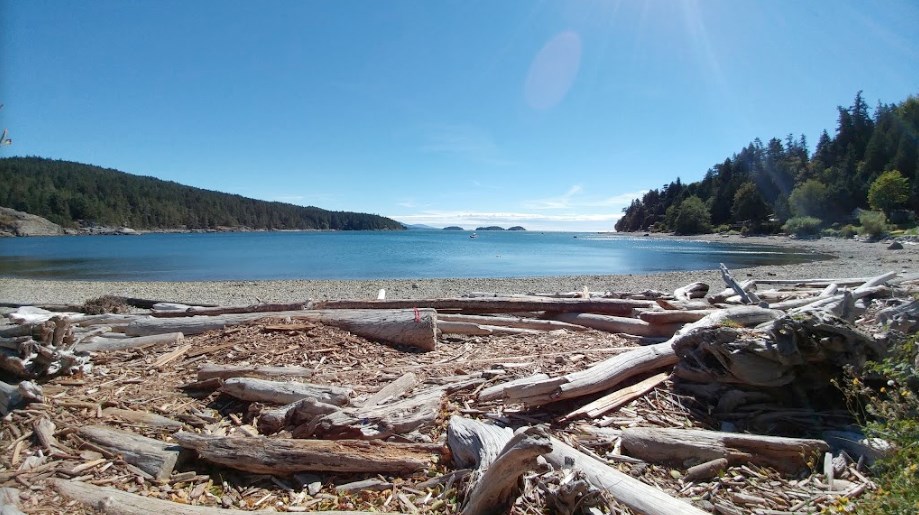The waterfront berm at Sargeant Bay Provincial Park on Redrooffs Road in Halfmoon Bay is an extremely popular walking location for the locals. The short stroll from the parking lot to the fish ladder is about 300m with the bay on one side and the wetland on the other. The view over the bay to the east is towards the Trail Islands and on a clear day the distant snowcone of Mt. Baker can be seen between the islands. There is also lots of informative signage provided by the Sargeant Bay Society.
Birders know Sargeant Bay as a great location to observe birds, as within the short walking distance there are numerous different habitats, each attracting different species with forest, wetland, the bay, the beach and the shrubby, open habitat on the berm itself. Also, the species to be observed varies widely with each season. On Sunday, Nov. 3, in a two-hour period, 30 species were recorded.
One disappointing aspect is that in the last couple of decades the birds to be seen on the bay itself have declined very markedly. In the winter the bay used to host a significant population of sea ducks such as scoters, goldeneyes, buffleheads, and also loons, grebes and gulls. While these species still appear, they are much reduced. I do not know the reason but it must be related to a disrupted food supply. Conversely, on Sunday, looking out to the west of the Trail Islands, there was a feeding frenzy of many hundreds of gulls, but they were too far away to determine the species.
The Sargeant Bay wetland was excavated in the early 1990s and has been growing in with cattails ever since. In addition, the dynamics of the wetland owe much to the presence of the beavers that live here. Today, it is a thriving wetland community and very attractive to many bird species. Perhaps the most significant species is the Virginia rail, a secretive bird that skulks around in the dense vegetation and rarely shows itself. They are usually detected by their vocalizations, and on Sunday they were especially vocal for reasons unknown. Other species inhabiting the wetland in winter are red-winged blackbird, great blue heron, and belted kingfisher, and on the open water there was a pied-billed grebe.
The open, shrubby habitat on the berm is very attractive to seed-eating species, and on Sunday there were spotted towhee, dark-eyed junco and four species of sparrow: song, fox, white-crowned and golden-crowned. The alders on the berm were seething with a flock of pine siskins and all was going well for the siskins until a sharp-shinned hawk appeared and successfully grabbed one. The hawk then flew off across the wetland struggling to maintain height with the additional burden of the prey in its talons. The alders also yielded a late migrant yellow-rumped warbler. On the Big Rock a flock of robins were feasting on arbutus berries.
To report your sightings or questions, contact [email protected]
Good birding!



